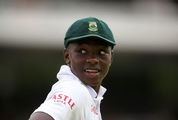Looking for love in wrong places
by Tim Harford,
2016-02-17 05:50:38.0
ONLINE dating promised so much. "This is one of the biggest problems humans face and one of the first times in human history there was some innovation," says Michael Norton, a psychologist at Harvard Business School.
Finding the right partner, whether for life or for Saturday night, is so important to so many people that you would think we might have cracked it by now. By assembling a vast array of date-worthy people in a searchable format, online dating seems like it should be an improvement on the old-fashioned methods of meeting people: at work, through friends, or in bars. But it’s not clear that the innovation of online dating is helping very much.
A survey Norton conducted with two other behavioural scientists, Jeana Frost and Dan Ariely, revealed that people were unhappy with their online dating experience in three obvious ways. The first was that the "online" bit was about as much fun as booking a dentist’s appointment. The second was that it took forever — the typical survey respondent spent 12 hours a week browsing profiles and sending and receiving messages, yielding fewer than two hours of offline interaction.
Now, 106 minutes are plenty for certain kinds of offline interaction but, however people were spending their time together, they didn’t seem satisfied. This was the third problem: people tended to have high expectations before the dates they’d arranged but felt disenchanted afterwards.
It is no surprise that we seem hungry for a better way. Most approaches to online dating exploit one of the two advantages of computers: speed and data-processing power. Apps such as Grindr and Tinder allow you to skim through profiles on simple criteria. Which is fine for a one-night stand but less promising for a relationship.
The alternative, embraced by more traditional matchmaking sites such as Match.com and OkCupid, is to use the power of data to find the perfect partner. We badly want to believe that after giving a website a list of our preferences, hobbies and answers to questions such as, "Do you prefer the people in your life to be simple or complex?", an algorithm will produce a result.
Wired magazine introduced us to Chris McKinlay, "the maths genius who hacked OkCupid" and managed to meet the woman of his dreams after reverse-engineering the website’s algorithms. His achievement is somewhat diminished by the revelation that he had to work his way through dates with 87 women before his "genius" paid dividends.
Imagine looking at the anonymised dating profiles of 10 close friends and comparing them with the profiles of 10 mere acquaintances. Using the profiles alone, could you pick out the people you really like? The answer, says Ariely, is no.
It is crazy to believe that someone’s eye colour and height, or even hobbies and musical tastes, are a basis for a lasting relationship. But that is the belief algorithmic matching encourages. Online dating is built on a Google-esque trawl through a database because that’s the obvious and easy way to make it work.
Is there a better way? Perhaps. Jeana Frost’s PhD research explored an alternative approach. Why not, she asked, make online dating a bit less like searching and a bit more like an actual date? She created an image gallery in which people had a date, represented by avatars with speech bubbles. People enjoyed these virtual dates and, when they later met in person, the virtual date seems to have worked well as an icebreaker.
Virtual dating has not taken off, says Norton, in part because dating companies have tried too hard to make it realistic, and have fallen into the "uncanny valley" of the not-quite-human. Perhaps mainstream virtual dating is just waiting for the right design to emerge. Or perhaps online dating services prosper if they keep us coming back for more. Setting someone up with a partner for life is no way to win a repeat customer.
The Financial Times

CONVENIENCE: Most approaches to online dating exploit one of the two advantages of computers: speed and data-processing power. Picture: ISTOCK
ONLINE dating promised so much. "This is one of the biggest problems humans face and one of the first times in human history there was some innovation," says Michael Norton, a psychologist at Harvard Business School.
Finding the right partner, whether for life or for Saturday night, is so important to so many people that you would think we might have cracked it by now. By assembling a vast array of date-worthy people in a searchable format, online dating seems like it should be an improvement on the old-fashioned methods of meeting people: at work, through friends, or in bars. But it’s not clear that the innovation of online dating is helping very much.
A survey Norton conducted with two other behavioural scientists, Jeana Frost and Dan Ariely, revealed that people were unhappy with their online dating experience in three obvious ways. The first was that the "online" bit was about as much fun as booking a dentist’s appointment. The second was that it took forever — the typical survey respondent spent 12 hours a week browsing profiles and sending and receiving messages, yielding fewer than two hours of offline interaction.
Now, 106 minutes are plenty for certain kinds of offline interaction but, however people were spending their time together, they didn’t seem satisfied. This was the third problem: people tended to have high expectations before the dates they’d arranged but felt disenchanted afterwards.
It is no surprise that we seem hungry for a better way. Most approaches to online dating exploit one of the two advantages of computers: speed and data-processing power. Apps such as Grindr and Tinder allow you to skim through profiles on simple criteria. Which is fine for a one-night stand but less promising for a relationship.
The alternative, embraced by more traditional matchmaking sites such as Match.com and OkCupid, is to use the power of data to find the perfect partner. We badly want to believe that after giving a website a list of our preferences, hobbies and answers to questions such as, "Do you prefer the people in your life to be simple or complex?", an algorithm will produce a result.
Wired magazine introduced us to Chris McKinlay, "the maths genius who hacked OkCupid" and managed to meet the woman of his dreams after reverse-engineering the website’s algorithms. His achievement is somewhat diminished by the revelation that he had to work his way through dates with 87 women before his "genius" paid dividends.
Imagine looking at the anonymised dating profiles of 10 close friends and comparing them with the profiles of 10 mere acquaintances. Using the profiles alone, could you pick out the people you really like? The answer, says Ariely, is no.
It is crazy to believe that someone’s eye colour and height, or even hobbies and musical tastes, are a basis for a lasting relationship. But that is the belief algorithmic matching encourages. Online dating is built on a Google-esque trawl through a database because that’s the obvious and easy way to make it work.
Is there a better way? Perhaps. Jeana Frost’s PhD research explored an alternative approach. Why not, she asked, make online dating a bit less like searching and a bit more like an actual date? She created an image gallery in which people had a date, represented by avatars with speech bubbles. People enjoyed these virtual dates and, when they later met in person, the virtual date seems to have worked well as an icebreaker.
Virtual dating has not taken off, says Norton, in part because dating companies have tried too hard to make it realistic, and have fallen into the "uncanny valley" of the not-quite-human. Perhaps mainstream virtual dating is just waiting for the right design to emerge. Or perhaps online dating services prosper if they keep us coming back for more. Setting someone up with a partner for life is no way to win a repeat customer.
The Financial Times
















Change: -0.36%
Change: -0.29%
Change: 1.81%
Change: -0.81%
Change: -1.12%
Data supplied by Profile Data
Change: -0.97%
Change: -0.25%
Change: -0.36%
Change: 0.00%
Change: -0.47%
Data supplied by Profile Data
Change: 0.21%
Change: 0.09%
Change: 0.35%
Change: 0.52%
Change: -0.33%
Data supplied by Profile Data
Change: -0.32%
Change: 0.00%
Change: -0.20%
Change: 0.00%
Change: -0.26%
Data supplied by Profile Data